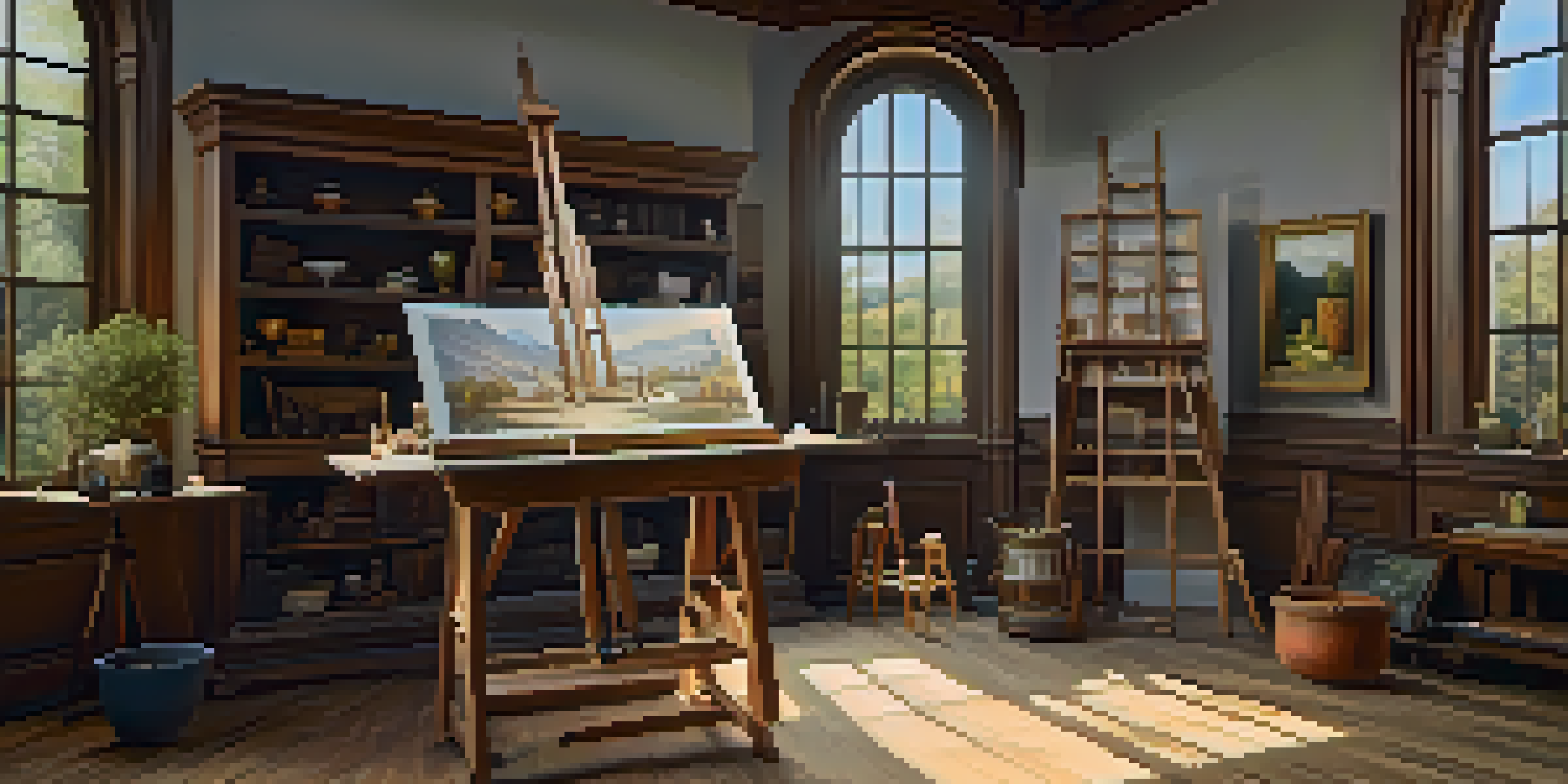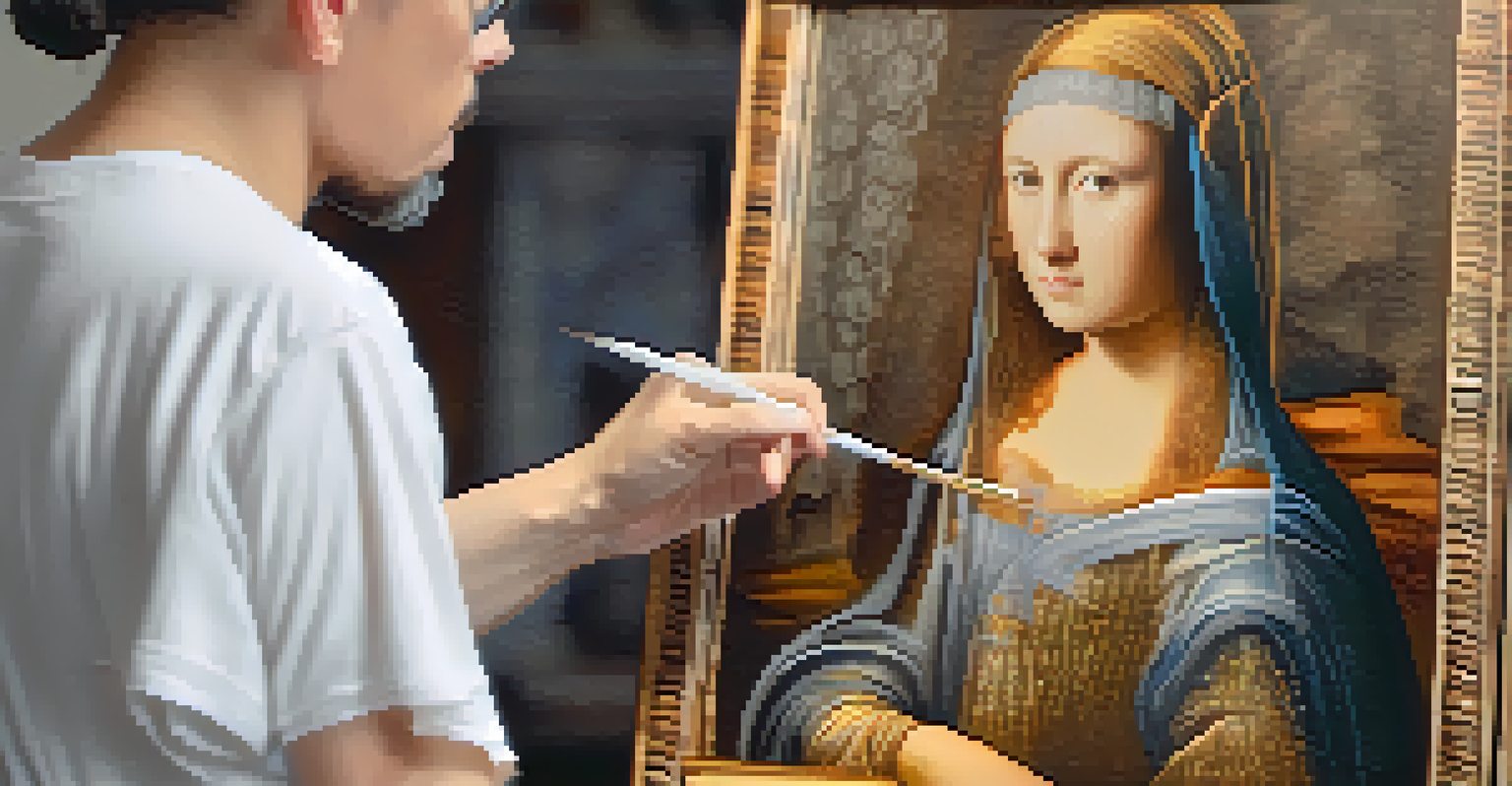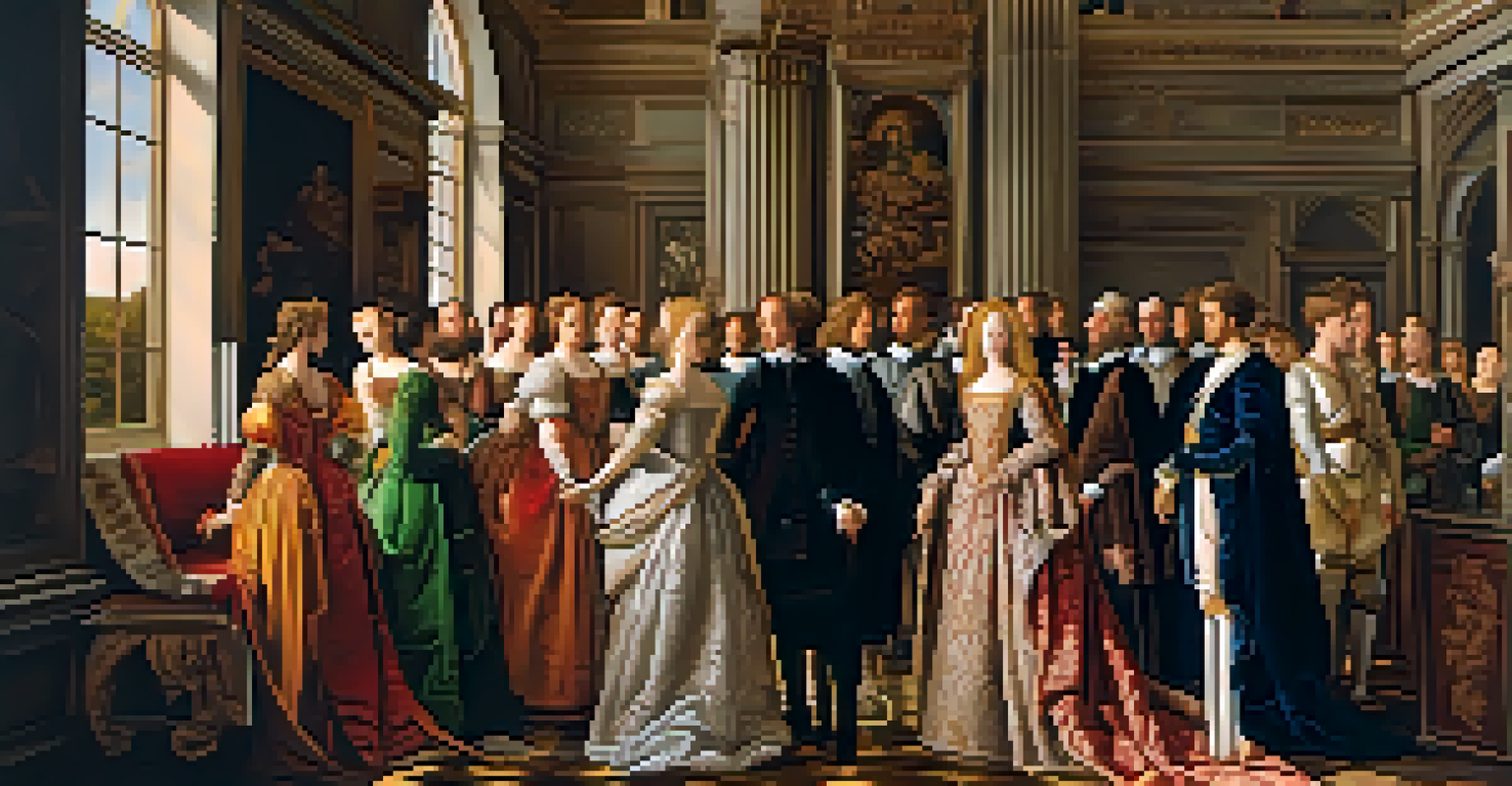Renaissance Innovations: The Birth of New Painting Tools

The Renaissance: A New Era in Art and Innovation
The Renaissance, spanning from the 14th to the 17th century, marked a profound shift in art and culture. Artists began to move away from the medieval styles and explore more realistic techniques, inspired by the classical ideals of ancient Greece and Rome. This period ignited a creative flame, leading to groundbreaking innovations in painting that would shape the course of art history.
Art is never finished, only abandoned.
One of the key characteristics of the Renaissance was the focus on humanism, which emphasized the importance of individual experience and expression. Artists sought to portray not just religious themes but also the beauty of the human form and nature. This shift required new tools and techniques that could capture these intricate details and subtle emotions.
As artists embraced this new vision, they began experimenting with various materials and methods, paving the way for the development of new painting tools that would enhance their craft. This evolution set the stage for an artistic revolution that would leave a lasting legacy.
The Advent of Oil Paints: A Game Changer
One of the most significant innovations of the Renaissance was the introduction of oil paints, which allowed for greater flexibility and richness of color. Unlike the earlier tempera paints made from egg yolk, oil paints could be layered and blended more easily, enabling artists to achieve stunning depth and realism in their works. This development opened up new possibilities for shading and texture.

Famous artists like Jan van Eyck and Leonardo da Vinci were among the first to fully harness the potential of oil paints. Van Eyck's meticulous layering technique created lifelike textures, while Da Vinci's sfumato technique allowed for soft transitions between colors, enhancing the three-dimensionality of his subjects. These methods became benchmarks for aspiring painters.
Renaissance Revived Realism
The Renaissance marked a significant shift towards realism in art, driven by humanism and a fascination with the human form and nature.
The use of oil paints not only transformed the way artists approached their work, but it also had a profound effect on the art market. With the ability to create more detailed and durable pieces, artists began to attract wealthier patrons, leading to a flourishing art scene that celebrated this new medium.
The Rise of Canvas: A New Surface for Creativity
As artists experimented with oil paints, the surfaces they used also evolved. The introduction of canvas as a painting surface was revolutionary, providing a lightweight and portable option compared to traditional wooden panels. This change not only made painting more accessible but also allowed for larger works, giving artists more room to express their creativity.
The painter should not paint what he sees, but what will be seen.
Canvas became particularly popular in Italy and soon spread throughout Europe. Artists found that the texture of canvas could enhance the vibrancy of oil paints, and its durability meant that artworks could be transported and displayed with ease. This innovation made it feasible for artists to create grand pieces for churches and public spaces.
The versatility of canvas also encouraged experimentation with different styles and techniques. As artists embraced this new medium, they could explore bolder compositions and larger-scale works, further pushing the boundaries of artistic expression during the Renaissance.
The Development of Brushes: Tools for Precision
With the rise of oil paints and canvas, the need for specialized brushes became essential. Artisans began crafting brushes with varying shapes and sizes, allowing artists to achieve different effects and levels of detail in their work. This innovation marked a significant advancement in painting tools, enabling greater precision and control.
Prior to the Renaissance, brushes were often made from animal hair, but during this period, artists experimented with different materials, including sable and hog bristle. This led to the creation of brushes that could hold more paint and produce finer strokes, making it easier to capture the nuances of light and shadow.
Oil Paints Transformed Art
The introduction of oil paints revolutionized artistic techniques, allowing for greater depth, color richness, and detailed textures.
As artists like Titian and Raphael honed their skills with these new brushes, they demonstrated the profound impact of this tool on their work. The ability to manipulate paint with such precision allowed for intricate details, transforming the way stories and emotions were conveyed on canvas.
The Influence of Science on Painting Techniques
The Renaissance was not just an artistic movement but also a period of scientific exploration. Artists began to incorporate scientific principles into their work, studying anatomy, light, and perspective. This blending of art and science led to groundbreaking techniques that enhanced the realism of paintings.
For instance, the understanding of linear perspective, developed by artists like Brunelleschi, allowed painters to create the illusion of depth on a flat surface. This technique revolutionized composition, making it possible to depict space and proportion accurately. The careful study of light and shadow also contributed to the overall realism of the artwork.
As artists embraced this scientific approach, they were able to elevate their craft to new heights. The intersection of art and science during the Renaissance not only enriched the visual experience but also laid the groundwork for future artistic movements.
The Role of Patronage in Art Innovation
During the Renaissance, the role of patrons became increasingly significant in the development of painting. Wealthy individuals and institutions sought out talented artists to create works that reflected their status and values. This patronage provided artists with the resources and freedom to experiment with new techniques and materials.
The Medici family in Florence, for example, were instrumental in fostering artistic talent. They commissioned works from renowned artists like Botticelli and Michelangelo, allowing these visionaries to push the boundaries of their craft. This financial support not only fueled innovation but also established a culture of artistic excellence.
Patrons Fueled Artistic Innovation
Wealthy patrons played a crucial role in fostering artistic talent, providing the resources necessary for artists to explore new techniques and styles.
As artists gained recognition and support from patrons, they were encouraged to explore diverse themes and styles. This dynamic relationship between artist and patron not only shaped the art of the time but also set a precedent for future generations of artists, highlighting the importance of collaboration in the creative process.
Legacy of Renaissance Innovations in Modern Art
The innovations in painting tools and techniques during the Renaissance have left an indelible mark on the art world. The introduction of oil paints, canvas, and advanced brushes set the stage for artists to explore new possibilities, ultimately leading to the diverse styles we see today. These advancements allowed for greater expression and creativity in art.
Modern artists continue to draw inspiration from the techniques developed during the Renaissance, incorporating elements of realism, perspective, and texture into their work. The principles of light and shadow, as well as the meticulous attention to detail, are still fundamental aspects of contemporary painting.

Moreover, the Renaissance's blend of art and science remains relevant, encouraging artists to push boundaries and challenge traditional notions. As we look back at this transformative period, it's clear that the innovations of the Renaissance not only shaped art history but continue to resonate in the creative expressions of artists around the world.